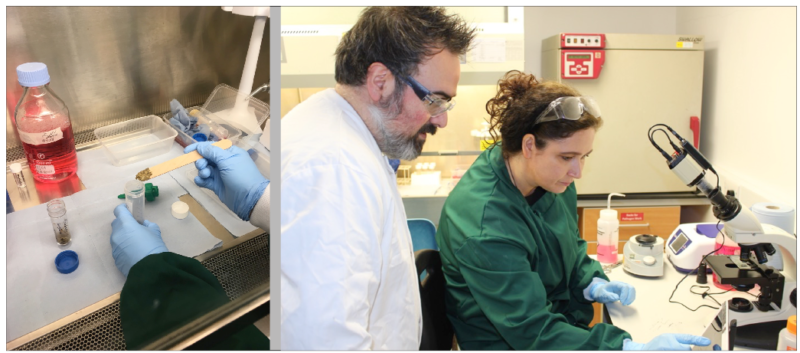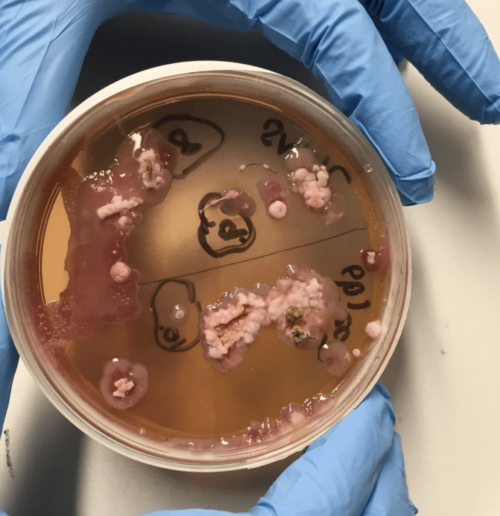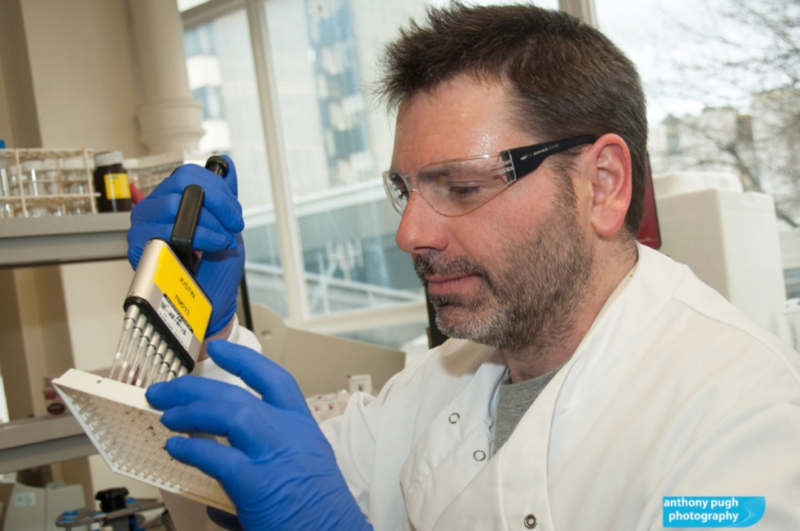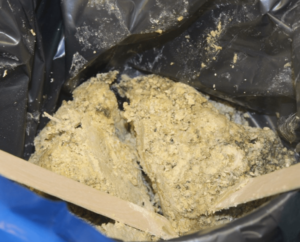Sewage science: Are bacteria just the tip of the fatberg?
Posted on May 18, 2018 by Dr Justin Pachebat and Professor Jo Hamilton
At Aberystwyth University, Dr Justin Pachebat and Professor Jo Hamilton volunteered to help analyse the contents of a London fatberg. We caught up with them to discuss their findings, how they became involved in their research and what challenges they encountered.
The UK population continues to have a morbid fascination with fatbergs; these mammoth clumps of oil, wet wipes and human waste coagulate in sewers and grow with every flush. In 2017, a 130-tonne fatberg dubbed ‘The Beast’ made national headlines and even got its own museum exhibit. There is no doubt that fatbergs are disgusting, but what can we learn from them?
According to Water UK, up to 75% of fatbergs are made up of wet wipes, making them the main cause of sewer-blockages. Although many wet wipes are marketed as ‘flushable’, they do not break down and are made up of polyester, gripping onto oil and other waste and coagulating.
How did you become involved in researching fatbergs?
The BBC emailed the British Society for Parasitology asking if anybody wanted to analyse fatbergs for parasites and we responded because we thought it would be fun! We also suggested looking at the bacterial content. Here at Aberystwyth, we have a strong parasitology research group and so felt we were equipped to work on this important issue. We already do a lot of work with parasitic helminths and gut protozoa such as Cryptosposporidium as well as bacterial pathogens such as Campylobacter.
We felt that this would be an important way to raise awareness of Water Sanitation and Hygiene (WASH) objectives.
What research techniques did you use?
We subsampled the fatbergs and used floatation, sedimentation and light microscopy to look for the presence of parasites and their eggs.

Professor Jo Hamilton sampling the fatberg (left) and preparing microscope slides
with Dr Russ Morphew (right)
We also plated for bacteria on nutrient agar and selective media and did some screening for antibiotic resistance. This was a quick ‘look-see’ and we were surprised at how many bacteria we found considering they were buried deep in the fatberg in what you would expect to be an anaerobic environment. Perhaps the fat helps protect the bacteria?

Microbes growing from ‘objects’ found in the fatberg

Dr Justin Pachebat analysing DNA in the lab
What challenges did you encounter in the lab?
Health and safety was our first challenge. We weren’t sure what pathogens might be present and also there was added risk from objects such as sharps contained within the fatberg. So we wanted to ensure we complied with all the necessary H&S regulations. We undertook an extensive risk assessment before we started any work. In retrospect, we were possibly overcautious, but better to be safe than sorry.

The fatberg used by Professor
Hamiltonand Dr Pachebat for
their research
The fatberg was very difficult to work with. Not only was it structurally dense, making it difficult to break open and subsample, but it also consisted of saponified fat. When fat comes into contact with an alkali, it becomes soap, a process called saponification. It takes a lot longer to release parasite eggs when fat is saponified, making the in the floatation and sedimentation steps more difficult. Using microscopy to look for the presence of parasites, we found that the fat globules often obscured the field of view. For the bacteria, we subsampled the fatberg into MRD and Ringers solution – and spent quite a lot of time homogenising and mixing the samples before plating out.
When sampling the fatberg, not only did we have to use quite a lot of force to break it open, but we also had to ‘excavate’ around objects that were buried within it. These included: condoms, femidoms, plastic cotton bud stems, floss, hair, threads, wires and of course, the infamous wipes. This shows how important it is to flush only pee, poo and paper down the toilet as these other anthropogenic objects act as seeds around which the fat congeals leading to the formation of fatbergs which block the sewers around the world.
What were your main findings?
We weren’t really expecting to find parasite eggs, because one would expect the eggs to be in the slurry of the sewer, and the given the volume of water, we expected parasite egg density to be quite low. So we were surprised to find parasite eggs buried within the middle of the fatberg samples.
The size and the morphology of the parasite eggs that we found has led us to suspect that they are either Fasciola hepatica or Alaria alata. Both of these can be zoonotic, but we believe these eggs originated from animal infections. We also found some nematodes that were present in the fatberg but these were almost certainly free living species.
We found quite a wide range of bacteria in the fatbergs with Campylobacter and Listeria spp. growing on selective media. These may originate from human gastrointestinal infections or from contaminated food products such as raw chicken (approximately 50% of chicken carcasses are contaminated with Campylobacter spp.) that may have been washed in a kitchen sink. The Food Standards Agency (FSA) advice is not to wash raw chicken prior to cooking as splashing water may spread Campylobacter bacteria onto hands, work surfaces, clothing and dishes. We also identified bacteria that we were able to culture in the presence of some broad-spectrum antibiotics suggesting the presence of resistance.
We are in the process of extracting genomic DNA and RNA from the fatberg samples and testing these by PCR and QPCR for a number of human and animal pathogens (including Campylobacter, Cryptosporidium, Eimeria, Fasciola, Giardia, Salmonella, Toxoplasma spp., norovirus and rotavirus). We are also working with Ana Maria Calcagno (Bioline, a Meridian Bioscience company) to test their inhibitor-resistant qPCR mix on the fatberg samples and have an MRes student (Matthew Evans) starting in September, who will study the microbiome and other aspects of the fatberg.
What do you want people to know based upon your findings?
Do not pour cooking oil or fats down the sink – it will clog up in your waste pipes and leads to the formation of fatbergs in our sewers. Commercial kitchens should collect their used cooking fat which could be used to generate income. Waste cooking oil can have commercial value and be used as a source of biodiesel.
We are extremely lucky to live in developed countries, with access to clean water and sanitation. This is not the case for many people around the world: 892 million people still have to defecate in the open and 2.4 billion people do not have access to basic sanitation. These people are at huge risk of parasitic infection with soil-transmitted helminths and diarrhoeal diseases caused by bacteria, protozoa and viruses. We believe it is a basic right to poo in a loo, and to have access to safe, clean drinking water and we want this for everyone on our planet.
If we want to continue to enjoy the levels of sanitation we have in the UK, we need to protect our ageing sewerage system. This means that only pee, poo and paper should be flushed down the loo. Do not flush prophylactics, plastics (such as ear buds and contact lens cases), nappies, baby/kitchen/wet wipes down the loo. Instead recycle where possible to reduce your environmental footprint. Otherwise bag and bin it BUT DON’T FLUSH IT.

